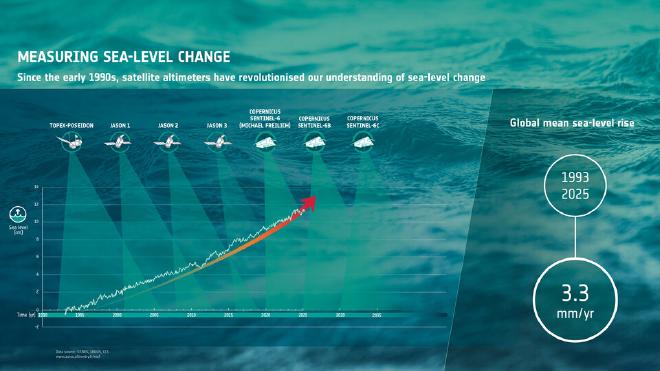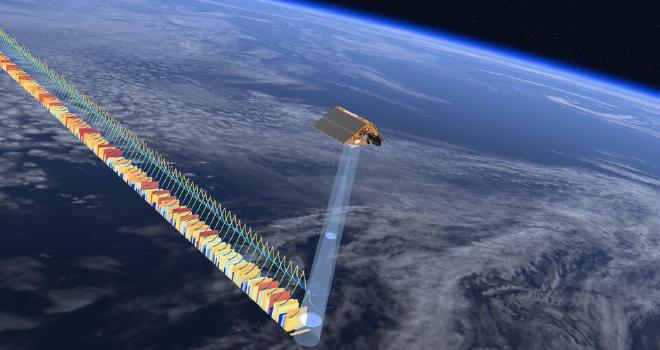

As its predecessor, Sentinel-6 Michael Freilich, Sentinel-6B carries the latest radar altimetry technology to further extend the sea-surface height record that began in the early 1990s. These measurements help scientists understand sea-level rise – crucial information for shaping climate policy and protecting the millions of people living in coastal areas around the world.
Sentinel-6B was launched yesterday, at 06:21 CET aboard a SpaceX Falcon 9 rocket from Vandenberg Space Force Base in California. The satellite was delivered into orbit just under an hour after liftoff, and at 07:54 CET ESA’s European Space Operations Centre in Germany received the all-important signal via the Inuvik ground station in Canada, indicating that Sentinel-6B is alive and well.
Sentinel-6B is set to carry forward the legacy of Sentinel-6 Michael Freilich, launched in November 2020. The Copernicus Sentinel-6 mission serves as the world’s primary reference mission for satellite sea-surface height measurements.
The continuous record of observations began in the early 1990s with the French–US Topex-Poseidon satellite and continued with the Jason series of satellite missions.
With sea-level rise high on the global agenda, numerous organisations have worked to make Copernicus Sentinel-6 the gold-standard reference mission for extending the record of sea-surface height measurements – delivering data with greater precision than ever before.

History #
Although part of the European Union’s family of Copernicus missions, Sentinel-6 is the product of exceptional international cooperation, involving the European Commission, ESA, NASA, Eumetsat and NOAA, with additional support from the French space agency CNES.
ESA’s Director of Earth Observation Programmes, Simonetta Cheli, said: **“collaboration between partners is key to a mission such as Sentinel-6, and my thanks go to everyone involved in developing, launching and operating this exceptional satellite, which follows in the footsteps of the first Sentinel-6, Michael Freilich.
“This achievement -she added- demonstrates what can be accomplished when international agencies and industries work together toward a shared goal. Sentinel-6B will ensure that we continue to collect the high-precision data needed to understand our changing climate, safeguard our oceans and support decisions that protect coastal communities around the world.”

As well as mapping the height of the sea surface to understand long-term change, Copernicus Sentinel-6 also provides data for practical ‘operational’ applications. For example, the mission measures significant wave height and wind speed, data that are used for near-real time ocean forecasting.
In fact, satellite altimetry provides the most comprehensive ocean sea-state measurements available today.
The satellites’ instrument package also includes an advanced microwave radiometer provided by NASA. Water vapour in the atmosphere affects the speed of the altimeter’s radar pulses – and therefore estimates of sea-surface height.
The advanced microwave radiometer accounts for this water vapour to ensure that measurements are accurate.

Sentinel-6B is now under the care of ESA’s mission control in Germany, where the team is taking the satellite through its ‘Launch and Early Orbit Phase’. Once this has been completed, control of the satellite will be handed over to Eumetsat.
Contact [Notaspampeanas](mailto: notaspampeanas@gmail.com)

